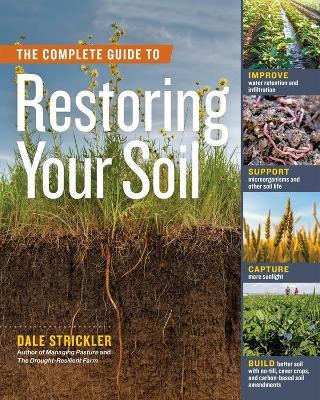Reviewed by annieb123 on
The Complete Guide to Restoring Your Soil is a well written and layman accessible guide to soil building and restoration by Dale Strickler. Due out 26th Oct. 2021 from Storey, it's a comprehensive 352 pages and will be available in paperback and ebook formats.
The author is an agronomist with a lot of experience in the field. He explains in the intro that he intended to write the definitive volume on soil-building and discovered along the way that there was already vast amounts of academic research on each facet of the information he originally intended to include. A great deal of the research on soil and the biome was so technical it was difficult to access and understand. The original scope of this book became impossibly huge and he decided to simplify and streamline the concepts into layman accessible and understandable language. In this goal, he has succeeded. This is a book which doesn't go into unnecessary depth on any one facet of soil building, but does manage to give the highlights over a wide spectrum of practical information.
The information is grouped thematically into sections: why build up soil, what ideal soil structure is made of, practice and practical methods for soil-building, and comparisons of previous and possible future improvements in systems and protocols. Graphically appealing and easy to understand, it's full of graphs and tables, simple illustrations, and clear color photographs.
The broad focus here means that not all the information included will be relevant for all (or even most) readers. There are significant takeaways for the home gardener here, but there are also many relevant practices aimed at large scale farmers (and even mega-agribusiness models). The relatively callous treatment of our soil over decades and non-sustainable agricultural methods of post WW2 mean that most people are looking at a real crisis of depleted and infertile land, destroyed microorganism populations, and loss to erosion. This book covers some of the ways to rebuild and turn around the destruction we've wrought before it's entirely too late.
This would be a good choice for public or school library acquisition, gardening groups, maker's and outdoor activity groups, agriculture trade schools, smallholders, and gardeners. There's a lot of good information here.
Four and a half stars.
Disclosure: I received an ARC at no cost from the author/publisher for review purposes.
Reading updates
- Started reading
- 12 September, 2021: Finished reading
- 12 September, 2021: Reviewed
